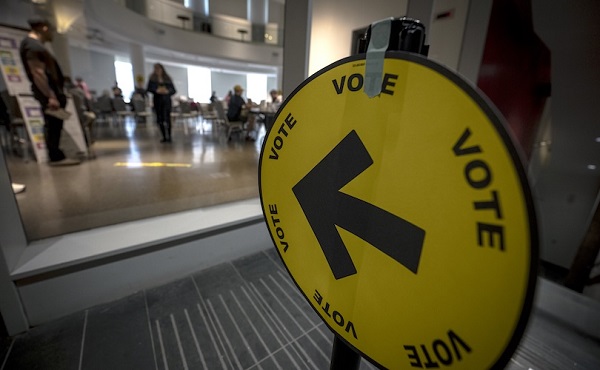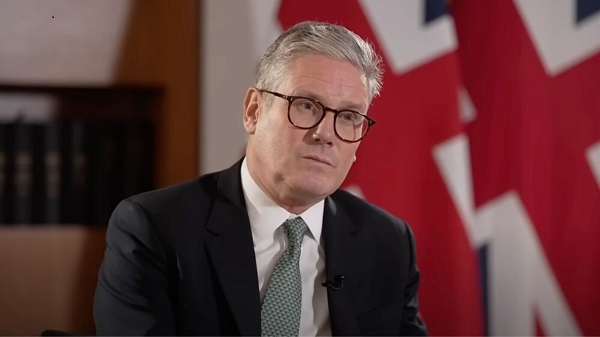News
Better Camping, More Tourism in Castle Parks

From the Alberta Government:
Albertans will have more opportunities for adventure this year as the province invests $3 million in capital upgrades in the Castle parks. Improvements will include new and improved family-friendly camping opportunities, trails, highly accessible front-country experiences and better access to the vast wilderness.
“Albertans have loved the Castle for generations. The region’s majestic landscapes are home to stunning mountains, rolling hills, montane forests and meadows. I’m pleased that through our capital funding commitment we can ensure families and visitors have an amazing and quality outdoors experience.”
In addition to the capital funding, Travel Alberta is contributing to and leading a $400,000 advertising campaign to encourage local visitation and boost international tourism to the Castle region. The campaign follows a series of closures in Waterton Lakes National Park due to damage from last year’s wildfires in southern Alberta.
“The Castle region is ready and open for business. Working with Travel Alberta, Alberta Parks and tourism operators, we’ve developed a campaign to help raise awareness and encourage visitation. It’s another way we are assisting in the local tourism recovery effort. I encourage Albertans and visitors alike to get out and explore all the hidden gems the Castle region has to offer. Get ready, there is so much to see and do.”
The tourism strategy will improve visitor access by paving Highway 774 south of Beaver Mines to Castle Mountain Resort and support the installation of water lines. Tourism signage on primary highways and wayfinding along travel routes through the Castle parks and region will also be installed this summer. The Government of Alberta is also releasing the Castle Management Plan. The plan reflects input provided through extensive engagement and consultation with First Nations, stakeholders and Albertans. Protection of wildlife and headwaters, the respect of Indigenous rights and exceptional recreational experiences remain the primary management objectives of the parks.
“The Castle Management Plan provides great opportunities to enjoy this beautiful and diverse landscape. The Great Divide Trail is the world’s best wilderness long-distance hiking trail, starting on the U.S.-Canada border travelling northward to the newly formed Castle parks. We couldn’t be happier with the outcomes in the plan. It has provided clarity, assurance and opportunity for recreation users who love the quiet contemplation of wild nature, and a reduced footprint on this ecologically important area of Alberta.”
“Equines and equine enthusiasts are an integral part of Alberta. The Alberta Equestrian Federation provides programs and services that cover a wide range of equestrian activities for beginners to experts in a multitude of disciplines. The Alberta Equestrian Federation is pleased to have participated in the public consultation process for Castle parks and we are excited about today’s announcement that facilitates equestrian use and enjoyment of this beautiful area.”
“Castle parks is a prime destination for Albertans hitting the road for a weekend with their family. The Recreation Vehicle Dealers of Alberta are pleased that these announcements today will result in more Alberta locations for owners of RVs to enjoy the RV lifestyle experience and keep Albertans supporting the local economy.”
“United Riders of Crowsnest Club is very enthusiastic about Alberta Parks’ plan for recreational trail development in the Castle provincial parks. A new ‘Epic’ mountain biking trail, linked to the communities of Crowsnest Pass and existing trails, will provide a great draw for mountain bikers. We look forward to sharing our spectacular scenery and trails as the Castle parks and Crowsnest area are increasingly recognized as a great outdoor recreational destination.”
Albertans won’t have to wait long to see changes to the new parks. A variety of small-scale infrastructure developments will be implemented to support the visitor experience, including improved camping amenities, trailhead parking, equestrian facilities and backcountry campsites. |
For more information visit albertaparks.ca
For More Stories visit Todayville.com
Internet
It’s only a matter of time before the government attaches strings to mainstream media subsidies

Misinformation is not exclusive to alternative online news organizations
In a previous world, whether they succeeded or failed at that was really no one’s business, at least provided the publisher wasn’t knowingly spreading false information intended to do harm. That is against the law, as outlined in Section 372 of the Criminal Code, which states:
“Everyone commits an offence who, with intent to injure or alarm a person, conveys information that they know is false, or causes such information to be conveyed by letter or any means of telecommunication.”
Do that, and you can be imprisoned for up to two years.
But if a publisher was simply offering poorly researched, unbalanced journalism, and wave after wave of unchallenged opinion pieces with the ability to pervert the flow of information and leave the public with false or distorted impressions of the world, he or she was free to do so. Freedom of the press and all that.
The broadcasting world has always been different. Licensed by the Canadian Radio-television and Telecommunications Commission (CRTC), content produced there must, according to the Broadcasting Act, be of “high standard”—something that the CRTC ensures through its proxy content regulator, the Canadian Broadcast Standards Council (CBSC).
Its most recent decision, for instance, condemned Sportsnet Ontario for failing to “provide a warning before showing scenes of extraordinary violence” when it broadcast highlights of UFC mixed martial arts competitions during morning weekend hours when children could watch. If you don’t understand how a warning would have prevented whatever trauma the highlights may have caused or how that might apply to the internet, take comfort in the fact that you aren’t alone.
The CRTC now has authority over all video and audio content posted digitally through the Online Streaming Act, and while it has not yet applied CRTC-approved CBSC standards to it, it’s probably only a matter of time before it does.
The same will—in my view—eventually take place regarding text news content. Since it has become a matter of public interest through subsidies, it’s inevitable that “high standard” expectations will be attached to eligibility. In other words, what once was nobody’s business is now everybody’s business. Freedom of the, er, press and all that.

Alberta Premier Danielle Smith
Which raises the point: is the Canadian public well informed by the news industry, and who exactly will be the judge of that now that market forces have been, if not eliminated, at least emasculated?
For instance, as former Opposition leader Preston Manning recently wondered on Substack, how can it be that “62 per cent of Ontarians,” according to a Pollara poll, believe Alberta Premier Danielle Smith to be a separatist?
“The truth is that Premier Smith—whom I’ve known personally for a long time—is not a separatist and has made that clear on numerous occasions to the public, the media, and anyone who asks her,” he wrote.
I, too, have been acquainted for many years with the woman Globe and Mailcolumnist Andrew Coyne likes to call “Premier Loon” and have the same view as Manning, whom I have also known for many years: Smith is not a separatist.
Manning’s theory is that there are three reasons for Ontarians’ disordered view—the first two being ignorance and indifference.
The third and greatest, he wrote, is “misinformation—not so much misinformation transmitted via social media, because it is especially older Ontarians who believe the lie about Smith—but misinformation fed into the minds of Ontarians via the traditional media” which includes CBC, CTV, Global, and “the Toronto-based, legacy print media.”
No doubt, some members of those organizations would protest and claim the former Reform Party leader is the cause of all the trouble.
Such is today’s Canada, where the flying time between Calgary and Toronto is roughly the same as between London and Moscow, and the sense of east-west cultural dislocation is at times similar. As Rudyard Kipling determined, the twain shall never meet “till earth and sky stand presently at God’s great judgment seat.”
This doesn’t mean easterners and westerners can’t get along. Heavens no. But what it does illustrate is that maybe having editorial coverage decisions universally made in Hogtown about Cowtown (the author’s outdated terminology), Halifax, St John’s, Yellowknife, or Prince Rupert isn’t helping national unity. It is ridiculous, when you think about it, that anyone believes a vast nation’s residents could have compatible views when key decisions are limited to those perched six degrees south of the 49th parallel within earshot of Buffalo.
But CTV won’t change. Global can’t. The Globe is a Toronto newspaper, and most Postmedia products have become stripped-down satellites condemned to eternally orbit 365 Bloor Street East.
The CRTC is preoccupied with finding novel ways to subsidize broadcasters to maintain a status quo involving breakfast shows. So we can’t expect any changes there, nor can we from the major publishers.
Which leaves the job to the CBC, whose job it has always been to make sure the twain could meet. That makes it fair to assume Manning will be writing for many years to come about Toronto’s mainstream media and misinformation about the West.
(Peter Menzies is a commentator and consultant on media, Macdonald-Laurier Institute Senior Fellow, a past publisher of the Calgary Herald, a former vice chair of the CRTC and a National Newspaper Award winner.)
Daily Caller
Big Tech Cover-Up: Google distorts search results to protect Obama

Quick Hit:
Google is under fire after a new study revealed it buried Tulsi Gabbard’s bombshell claims that Barack Obama fabricated Trump-Russia intel—flooding search results with leftist attacks and downplaying the story to protect the former president.
Key Details:
- DNI Tulsi Gabbard accused Obama of fabricating intelligence to bolster the Trump-Russia collusion narrative.
- Google News allegedly buried Gabbard’s exposé by promoting stories attacking her instead of covering her claims.
- MRC found that 90% of Google’s promoted coverage came from left-leaning outlets, leaving just 10% for right-leaning perspectives—almost exclusively Fox News.
Diving Deeper:
During a July 23 press briefing, Tulsi Gabbard revealed explosive allegations against the Obama administration, accusing the former president of overriding intelligence assessments that found no Russian interference favoring Donald Trump in 2016. According to Gabbard, Obama “manipulated” the intelligence community to promote a “contrived narrative,” aimed at undermining Trump and, by extension, the will of American voters.
But rather than spotlighting the story’s significance, Google appeared to move swiftly to suppress it. As the MRC study shows, Google’s News tab was flooded with coverage designed to discredit Gabbard—many articles outright calling her a liar or suggesting she was distracting from the Jeffrey Epstein scandal. One article from The Atlantic branded Trump’s public support for her findings as “desperate,” while others derided her evidence as “thin gruel” or claimed she was trying to “rewrite history.”
A closer look at Google’s search results between July 24 and July 29 paints a troubling picture. The MRC analyzed the first page of results for the term “Tulsi Gabbard” and found that out of 42 articles, 33 were from outlets classified by AllSides as “Lean Left” or “Left.” Only four were from right-leaning sources—and all four came from a single outlet: Fox News. Three of those Fox articles focused not on Gabbard’s claims, but on attacks against her, often echoing Democratic Party criticism.
MRC highlighted how even these rare conservative pieces offered little defense of Gabbard’s findings. One article simply quoted Rep. Adam Schiff dismissing the accusations as “dishonest.” Others featured video clips of NBC’s Kristen Welker pressing GOP figures like Sen. Lindsey Graham about the credibility of Gabbard’s claims. Only one article directly addressed the substance of her evidence.
Meanwhile, prominent left-leaning outlets featured in Google’s curated feed pushed narratives designed to ridicule or minimize the allegations. MSNBC dismissed her claims as “absurd,” while Politico suggested Gabbard had become a “weapon” for President Trump. CNN accused her of attempting to “rewrite history,” and FactCheck.org labeled her statements “misleading.”
The implications go beyond this single controversy. A 2021 Pew Research Center study found that two-thirds of Americans rely on search engines like Google for their news. This means most Americans are receiving information that has been filtered through what critics argue is an increasingly leftist editorial algorithm.
By not allowing a diversity of viewpoints on such a critical national security issue—especially one involving a former president—Google’s conduct raises serious concerns about media bias and the integrity of information distribution. While it is unsurprising to see The New York Times or CNN toe the DNC line, the monopoly Google holds over digital search amplifies this bias into something far more powerful and dangerous.
The episode underscores a growing divide in how news is curated and presented online. For conservative Americans, it also reinforces a longstanding suspicion: Big Tech is not just biased—it’s actively working to sanitize narratives unfavorable to the Democratic Party.
In this case, shielding Obama and undermining a sitting Trump administration official.
-

 Health1 day ago
Health1 day agoMAiD should not be a response to depression
-

 Business2 days ago
Business2 days agoGlobal elites insisting on digital currency to phase out cash
-

 Business1 day ago
Business1 day agoRed tape is killing Canadian housing affordability
-

 Frontier Centre for Public Policy2 hours ago
Frontier Centre for Public Policy2 hours agoBloodvein Blockade Puts Public Land Rights At Risk
-

 illegal immigration2 days ago
illegal immigration2 days agoBiden admin freed illegal alien now accused of decapitating boss
-

 Alberta7 hours ago
Alberta7 hours agoParents group blasts Alberta government for weakening sexually explicit school book ban
-

 2025 Federal Election1 day ago
2025 Federal Election1 day agoPost election report indicates Canadian elections are becoming harder to secure
-

 International1 day ago
International1 day agoTrump to Confront Starmer Over UK Free Speech Laws During State Visit















